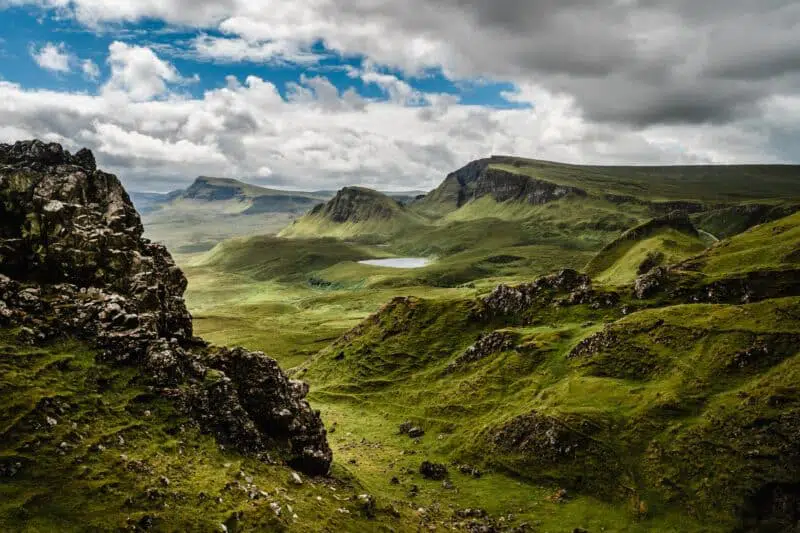Welcome to the Top 10 Endangered Animals in Scotland.
In this article we will discuss some of the animals which are classified as endangered species in Scotland. We will learn some of the interesting facts about various endangered animals in Scotland.
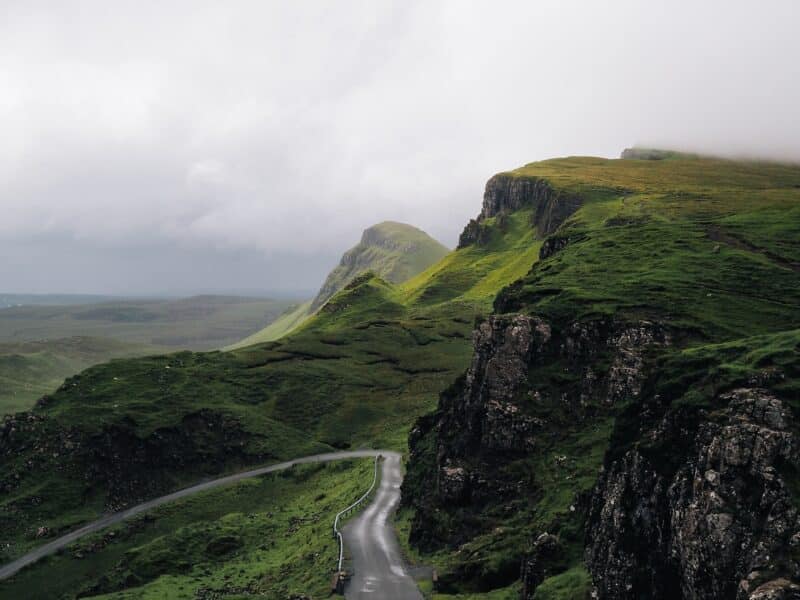
One of the threatened animals is the Honey Bee which is known as Scottish Honey Bee and bees are very important to conserve for this environment.
They are important for aiding with pollination of flowers which helps in growing of fruits and vegetables. There is vast variety of animals and plants found in nature in Scotland. There are various mountains and different kind of natural beauty found in various region of Scotland. Below is the list of animals which are found in Scotland and home for many animals.
Click below to jump to a section on the top 10 endangered animals in Scotland:
#1 Red Squirrel
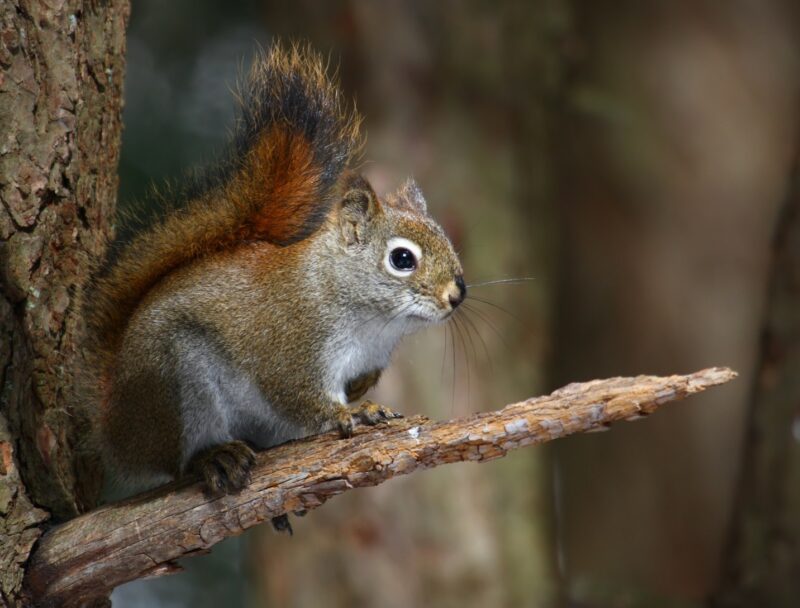
These squirrels are found in woodlands of Scotland. More modest and daintier than dim squirrels with articulated ear tufts. Red squirrels’ bodies are probably up to a grown-up’s hand and their tails are a similar length once more. Pay special attention to Huge, messy dreys (homes) high up in the trees, scratch blemishes on tree rind and pine cones, bit like apple centers, on the timberland floor.
In summer ospreys and ocean birds visit the loch. Scotland is home to the greater part of England’s red squirrels yet their numbers are minuscule – under 150,000 across the entire of England. They are under threat from their greater and more versatile dark American cousins, so we really buckle down with our accomplices to control dim squirrel numbers and to plant and keep up with the conifer timberlands across Scotland that red squirrels like. Hence earning a mention on the top 10 endangered animals in Scotland list.
Red squirrels love seeds, especially from pine, tidy and larch cones. It has been assessed that a solitary squirrel can gobble the seeds from up to 20,000 cones in a year! They likewise eat nuts, growths, shoots and products of bushes and trees and some of the time birds’ eggs. A red squirrel can determine whether a nut is positive or negative just by shaking it in its paws.
Pay special attention to parasites put high up on tree limbs in pre-winter: squirrels forget about them to dry prior to concealing them away for the colder time of year, alongside stores of seeds and nuts. You can see red squirrels lasting through the year since they don’t sleep. You might hear the scratching sound of a red squirrel’s hooks in the branches before you see it – and it could gab harshly or even stamp its feet assuming you shock it.
Red squirrels are dynamic in the daytime however, as us, could do without being out in awful climate. They additionally partake in a midday rest, particularly when it’s hot. From January into late-winter watch for red squirrels dashing through the trees and spiraling all over the trunks. This is mating time and the guys are pursuing the females. Regardless of their name, red squirrels aren’t generally dazzling corroded red – some are pale brown, dim or practically dark and their tails frequently go very fair in summer. Nonetheless, not at all like dim squirrels, reds generally have unmistakable furry tufts on their ears.
#2 Water Vole
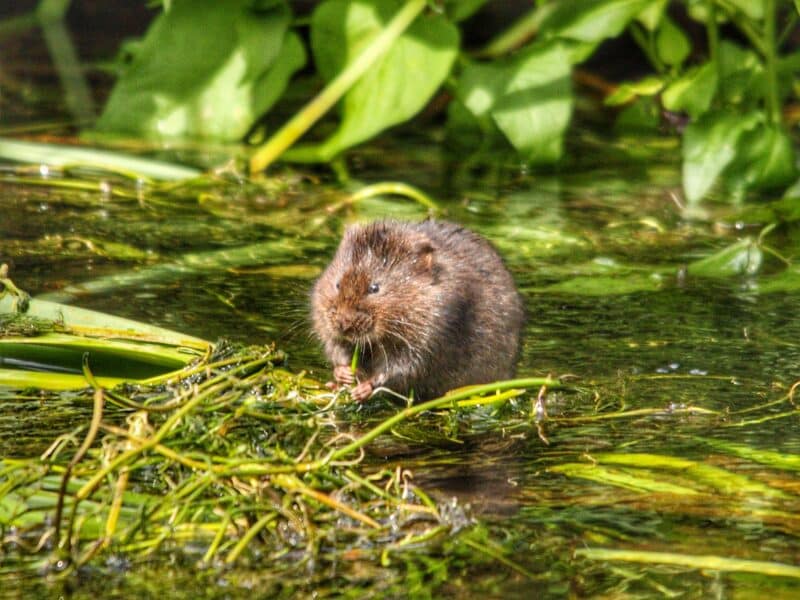
The water vole is one of the quickest declining wild warm blooded animals in the UK and has vanished from many pieces of the nation where it was once considered normal. Unfortunately deserving of a mention on the list of the top 10 endangered animals in Scotland. This has brought about its consideration as really important species under the UK Biodiversity Activity Plan and lawful insurance through the Natural life and Wide open Demonstration 1981. Water voles have been available in Glasgow for many years and they have been kept in wetlands including ditches, swamps, lakes, consumes and waterways.
As the name proposes water voles customarily live in and around water. Nonetheless, water voles were as of late found in Glasgow living away from water and from that point forward huge populaces have been kept in the east finish of the city living in lengthy field in parks, street borderlines, nurseries and neglected land (brownfield).
These earthly water voles are named fossorial which means adjusted for digging and they invest more energy underground like a mole. This variation to living in meadows in such high densities in a metropolitan climate is remarkable in the UK and ongoing examination has uncovered that this populace is of public importance.
#3 Eurasian Beaver
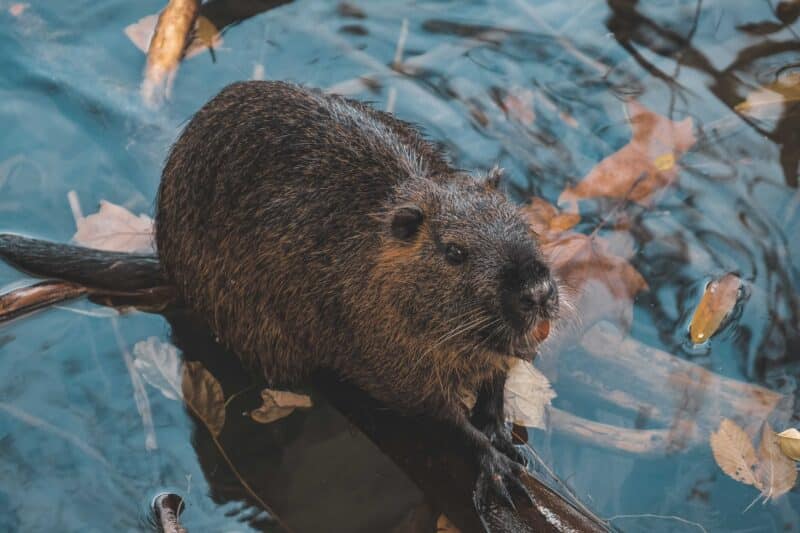
They were once far and wide in England and Europe. However was pursued across its reach for its fur and for its musk scented emissions, called castoreum. It was wiped out in England by the sixteenth hundred years and the Eurasian populace was only 1 200 people in 1900. From that point forward, the populace has to some degree recuperated and there have been effective renewed introductions to Scotland, portions of France, southern Germany and Austria.
In November 2016 the Scottish populace was officially perceived as a local animal groups. Beavers are incredible swimmers and jump for times of five to six minutes, utilizing their expansive, leveled tail as a rudder. They tunnel into the bank or utilize existing openings for sanctums (called lodges), which have passageways beneath the water level. Assuming there are no appropriate banks, lodges are worked from branches, soil and woody flotsam and jetsam. Moreover, beavers develop dams, making floodplains that expand the assurance around their cabin and give expanded chances to search.
Beavers breed predominantly from December to April and litters of generally 2 – 3 units are brought into the world in May or June. The young beavers lean to swim in very less time and they start living independently when they are 2-3 months old. They are weaned in their most memorable summer yet may not scatter until two years of age. They are probably not going to rise until their third year effectively. They eat water plants in summer season and in winter season they eat wide barks of tree.
They start collecting their food in for winter season, generally in month of October and November. They prefer to live near low streams region like slow water ways and lakes where it is easy to find food too. They can colonize non-ideal environment by dam-building, which expands rummaging natural surroundings. There are around 11 grown-ups, including two rearing matches, and two packs in Scotland. Beavers were once broadly dispersed in Extraordinary England however were never present in Ireland.
#4 Mountain Hare
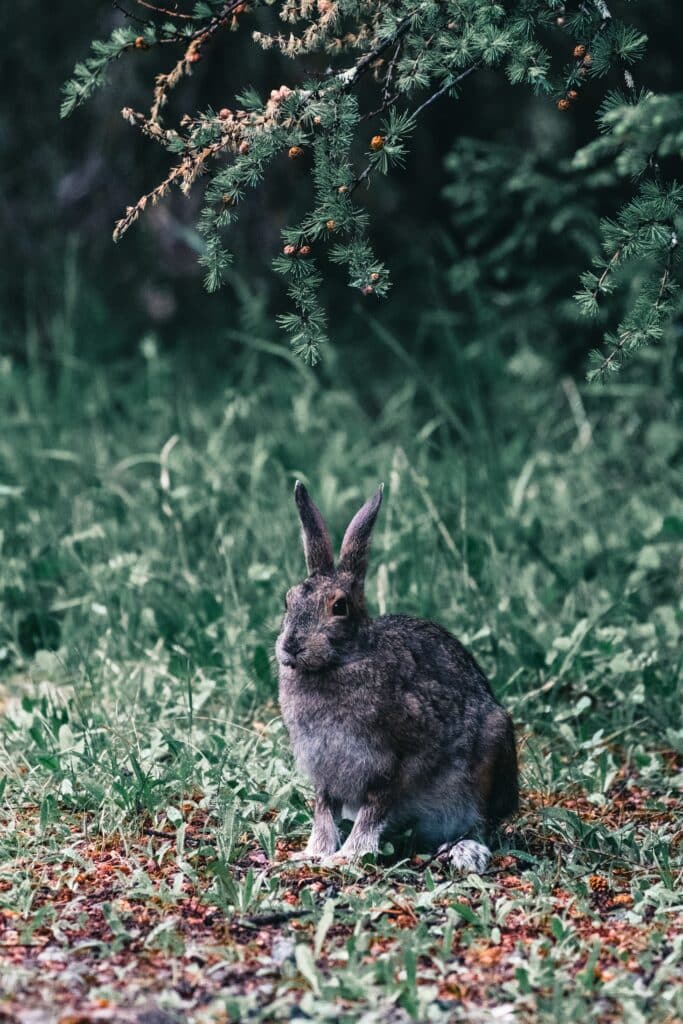
The strong mountain rabbit is our just really montane/cold vertebrate and is chiefly confined to Scotland’s strategic position (for the most part over 300 to 400m) however may likewise happen at low heights, for example in the north-west, where moorland can be found simply above ocean level. Dark brown in summer to mix with the heath, the mountain rabbit’s jacket becomes white in winter, to match the snow.
Like deer, the mountain bunny, earthy colored bunny and hare are significant perusing species whose exercises can altogether change vegetation design and piece. Each of the three species can happen at sufficiently high densities to cause biological and financial harm, for example by perusing youthful trees and forestalling regrowth. Bunnies are significant prey for bigger flying predators and well evolved creatures like the stoat and wildcat.
What’s more, however they might cause harm, bunnies can likewise assist with keeping up with some field environments by giving open patches to little plants. The bunny has numerous normal hunters yet its numbers are controlled essentially by sickness. Yet, are still part of the top 10 endangered animals in Scotland.
#5 Pine Marten
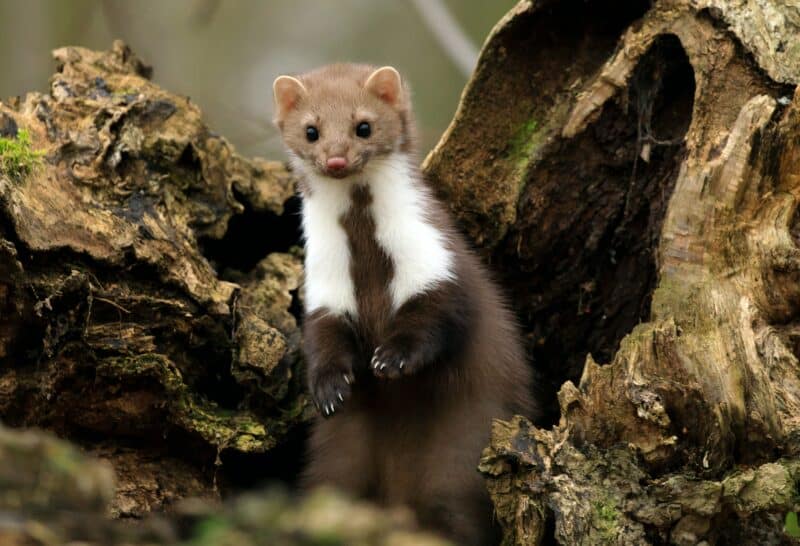
These animals are part of weasel family. There are various members which are part of marten family some of them are weasel, otter, polecat etc. They are small in size and look like size of pet cats. They have heart-formed face, enormous earthy colored eyes, thin crooked physic, thick fur coat on their body which is rust brown in color, ostentatious apricot-shaded napkin, thick bushy tail in winter season which is long in length, these characteristics helps them in creating a difference from other species.
They like to live in three-layered environments for which they use their good climbing skills to get food and protect themselves from prey. They are good gymnasts skill which favor different forest territory and an advanced ground and bush layer. Tree holes are utilized as denning locales. Martens, notwithstanding, are entirely versatile and assuming forest is scant or inadmissible, the creatures will possess bluffs, ridges, rough mountainsides and sometimes the rooftop space of structures.
Pine martens seldom uncover their own lairs. All things considered, they like to utilize a scope of forest designs. Without a trace of normal designs, they are glad to possess enormous bird boxes, meticulously designed lair boxes and, surprisingly, old structures. They are omnivorous animals and can eat whatever found in their surroundings. During the summer and spring season they like to eat fruits tree and majorly cover their diet from fruits.
#6 Puffin
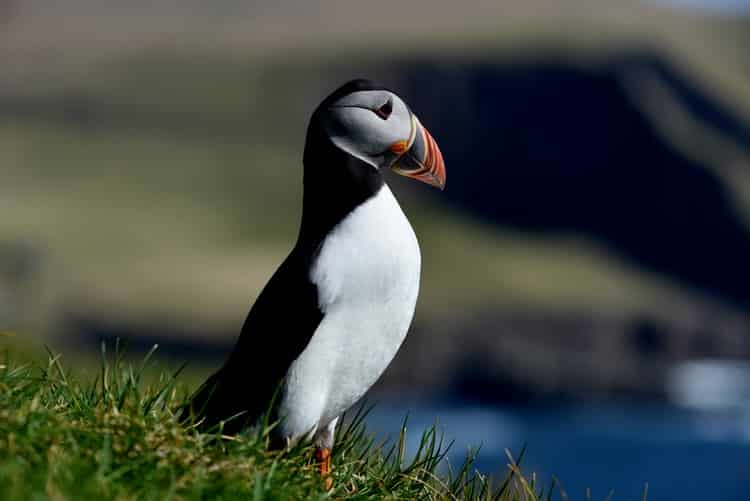
Puffins are the most novel ocean birds which are found at the beach areas of Scotland. There are two types of Puffins, one is tufted puffin and another is horned puffin. The distinction will be radiant orange bill and web sort of feed which are dark and white in variety. In prior times mariners used to call them ocean parrots due to their variety. Tufted puffins have brilliant tufts of plumes behind their eye and horned puffin has dark horn sort of checking over both the eyes so they are separate with their eye marks.
Their weight is approx. 1.5 pounds and normal wingspan is if 25-30 inches. Puffins can swim submerged, they are great swimmer. They are made for swimming as opposed to fly. Numerous vacationer visits to see them in various areas of Scotland. There are four unique kinds of puffins. The ones you will see in Scotland are called Atlantic puffins since they live for a long time of the year on the Atlantic Sea. But are still classified as being on the top 10 endangered animals in Scotland.
Their plumage is white and dark and their snouts are a dazzling orange with various shaded stripes. Their feet are orange as well. Be that as it may, when the mating and reproducing season is over after the mid year, they shed their splendid varieties and external bill to be supplanted by a fairly dull dark and a lot more modest nose. On the off chance that you see them adrift, you probably won’t remember them as puffins.
#7 Otter

This type of creatures was lost from the vast majority of Britain and Ridges between the 1950s and the 1970s in view of pesticide contamination of streams. Be that as it may, it made due in Scotland’s cleanest waterways in the north and west. Today, the species is thriving across Scotland, and recuperating great across the UK as streams are tidied up.
The Scottish populace is assessed to be around 8000 otters. Otters are generally single, semi-amphibian well evolved creatures that get the greater part of their food from lochs, waterways or the ocean. The Scottish populace has a curiously high extent (maybe half or a greater amount of) beach front dwelling people, which feed only in the ocean.
An otter should eat around 1-1.5kg of prey everyday. Chiefly dynamic during the day, beach front otters by and large have a lot more modest home reaches than their riverine partners, due to the wealth of fish and shellfish prey in inshore waters. Otters should keep their fur liberated from salt involving freshwater for it to stay powerful as protection. The incubation time frame in otters is around 60 to 86 days. The infant puppy is really focused on by the bitch, canine and more established posterity.
Female otters arrive at sexual development at around two years old and guys at roughly three years. The holt is worked under tree roots or a rough cairn, more normal in Scotland. It is fixed with greenery and grass. Following one month, the puppy can leave the holt and following two months, it can swim. The little guy lives with its family for roughly one year. Otters satisfy 16 years; they are commonly energetic, and skip in the water with their puppies. Its standard wellspring of food is fish, and further downriver, eels, however it might test frogs and birds.
#8 Red Deer
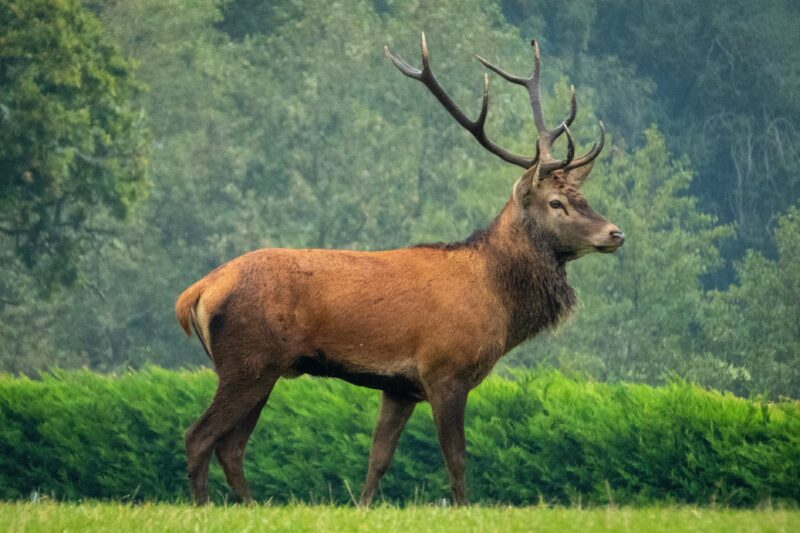
The temple and the bez prongs of the tusk are typically near one another and a good ways off over the burr. Red deer initially lived on the forest edge, however hundreds of years of decrease in backwoods cover in England has constrained them to adjust to life on the open slope. They move normally among forest and moorland, and on the off chance that they can observe sanctuary and food among the trees they’ll be better and bigger. They eat a wide assortment of plants, from grasses and heather to bushes and trees.
They possibly objective harm to the timberland in the event that there are an excessive number of them. Early morning or in the evening are great times, when the forest hushes up. They invest more energy among the trees in the harvest time and winter, yet you’ll require sharp eyes to recognize them: their reddish brown coat is all around covered in the woods conceal. During the trench in September and October you could well hear them regardless of whether you see them.
#9 Capercaillie

Otherwise called the western grouse, this huge bird species is available through quite a bit of Europe and northern Asia. Their reach has limited throughout recent hundreds of years and is presently terminated in Ireland and Belgium. In the UK they are just found in Scotland. The capercaillie is a non-transient bird that inclines toward mature conifer woodland with an open shade. But difficult to find and have a spot on the top 10 endangered animals in Scotland.
Loss of this natural surroundings is to a great extent affecting their numbers. Male and females vary extraordinarily in size, as a matter of fact they have one of the biggest sexual dimorphisms in the bird world. Guys are for the most part somewhere in the range of 75 and 85 cm long, albeit one out of control individual was estimated at a meter long, and a typical load of 4.1 kg. Females are more modest at somewhere in the range of 54 and 64 cm with a typical load of 1.8 kg. One more distinction among male and female is the shade of their plumes.
#10 Bottlenose Dolphin
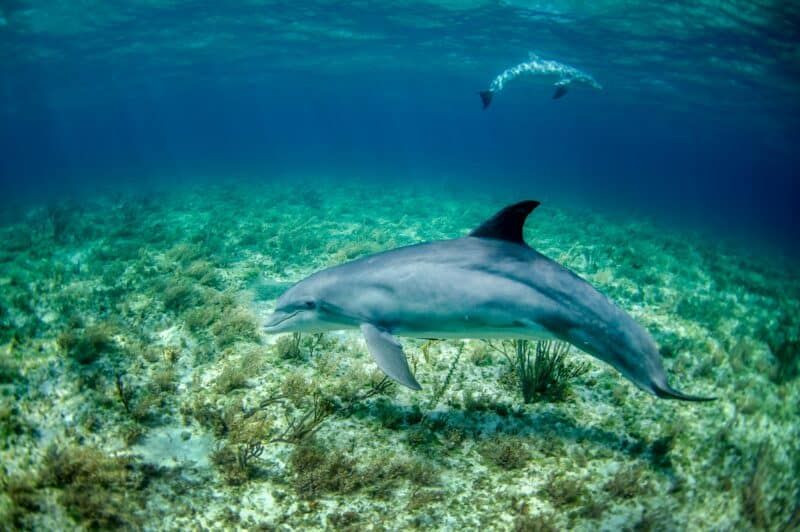
Bottlenose dolphins are one of a handful of the dominant hunters living in Scottish waters. They are coordinated trackers typically benefiting from a scope of fish, squid and scavengers. Dolphins eat their prey entire subsequently why you might see them tossing fish, for example, salmon high up to ensure the food slides down the throat.
For this reason dolphins have cone shaped molded interlocking teeth to guarantee they catch and clutch their dangerous prey! In Scotland, we are lucky to have the northern most restriction of bottlenose dolphins’ worldwide reach. However, their numbers have dwindled, hence they are on the top 10 endangered animals in Scotland. Because of the crisp states of the North Ocean the bottlenose dolphins are the biggest, chunkiest and most obscure viewed as anyplace on the planet! They arrive at 4m long and need a thick layer of lard to remain warm in Scottish oceans.
Summary top 10 most endangered animals in Scotland
https://www.youtube.com/watch?v=SKhJr4Jg1Xs&t=104s
If you enjoyed reading about the above, check out top 10 endangered animal sin the Amazon rainforest and top 10 most endangered birds next!
Join our Forum for free today!

- These are The 5 Largest Great White Sharks Ever Recorded - July 19, 2024
- The Surprising Benefits of Big Game Hunting - July 18, 2024
- $100k+ Hunting Experiences The Most Expensive Animals to Pursue - July 17, 2024

